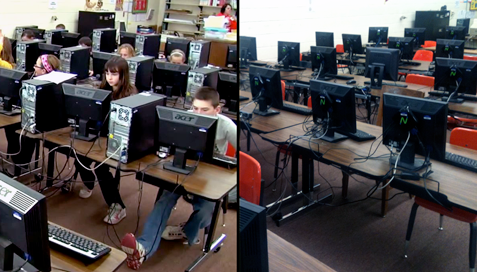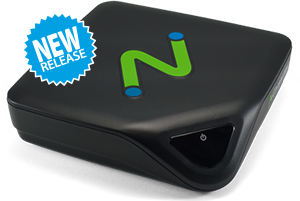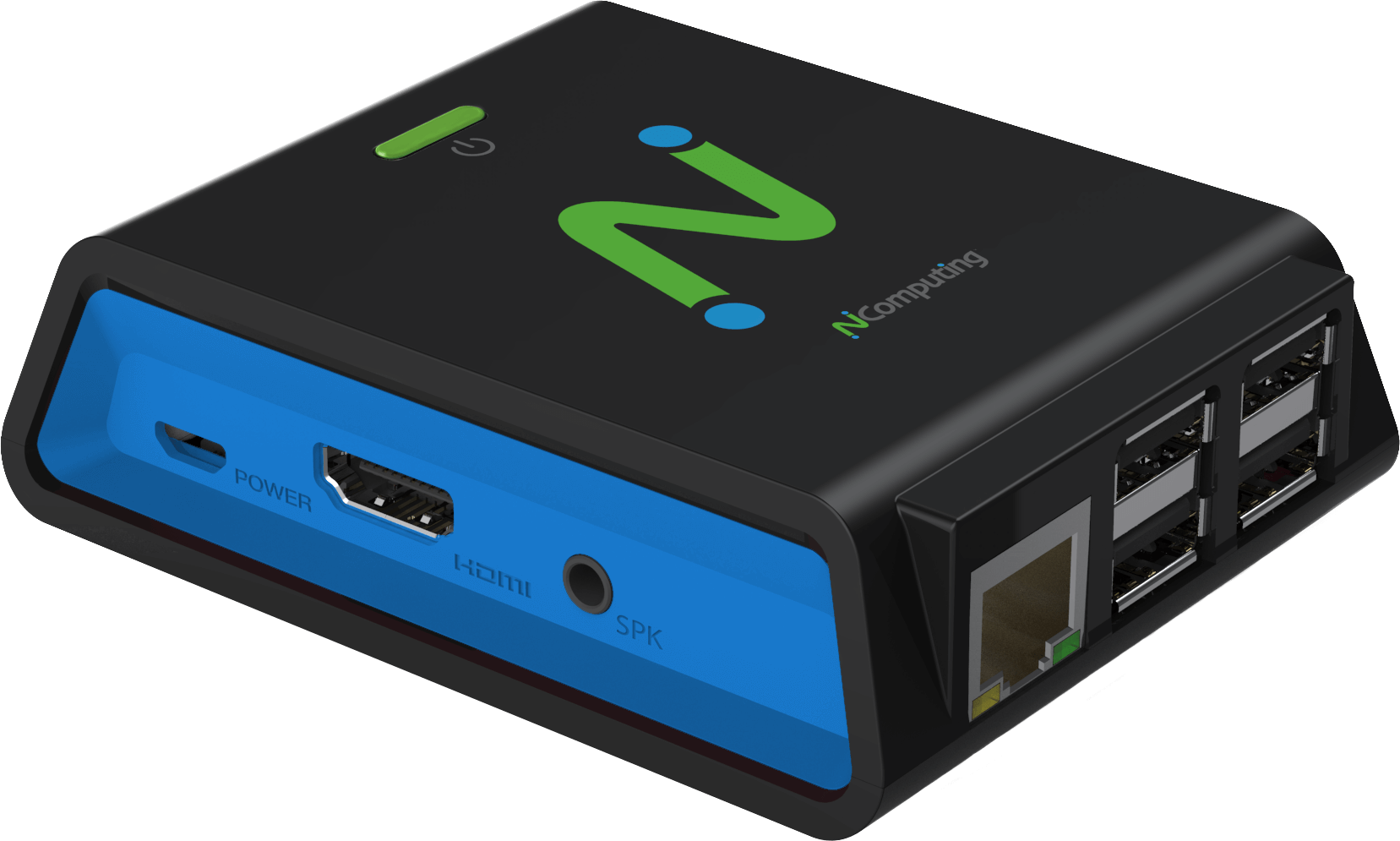NComputing Thin Clients chosen to migrate from Windows XP – PARCC assessment testing support key to success.

Before & After: Replacing PCs with L300 thin clients saves money, resources while reducing power usage and desk space.
About Pana Community School District #8
Located in Central Illinois, Pana Community School District #8 is comprised of 4 schools with a staff of 98 teachers serving 1,400 students from pre-kindergarten through 12th grade.
Windows XP migration opens door to improve class computers
Like most school districts, Pana Community School District #8 is consistently challenged to meet its technology needs on a limited budget, so when it came time to update computers in its classrooms, they had do it in a thoughtful manner. The school district needed to move from Windows XP as cost-effectively as possible in a way that would meet the requirements of both teachers and students immediately and long-term.
Scott Savage, District Technology Coordinator for the Pana Community School District #8, led the initiative to update the computers, built on a desktop environment with limited support for BYOD. Aside from migrating from Windows XP, he was also concerned with implementing a solution that would be cost-effective for the initial investment as well as ongoing support.
“The need to move from Windows XP was the primary initiative for us, but we wanted to take the opportunity to make other improvements in our computing environment for the long term,” said Savage. “Virtualization quickly emerged as the best way to address our goals, especially because it would deliver a consistent experience to all users while eliminating the need to maintain individual desktops across all campuses.”
In the process of evaluating solutions Savage considered VMware’s VDI solution, and while it met the needs of the school district, the required infrastructure and licensing fees were cost-prohibitive. “The expense of implementing VMware per user was going to be the same as getting new desktop PCs,” said Savage. “We didn’t need anything that complex. Especially something that required a certification course to implement correctly.”
Savage then evaluated NComputing’s vSpace Server and L300 thin client devices and quickly realized its benefits. For starters, the solution was one-third the cost of a comparable desktop replacement, allowing the district to save on acquisition costs while easily supporting multiple users. The installation of the L300 devices was also effortless. So much, in fact, that Savage said the process of unpacking the new devices and packing up the old computers was more time-consuming than the time required for the installation.
Ongoing maintenance chores were also reduced. “If one of our teachers calls up and has a problem with thin clients in a classroom, it’s a lot easier to fix it at the server rather than go around to 50 desktops,” said Savage. “Now I only have 12-15 servers to worry about rather than hundreds of desktops. It takes me about one-fourth of the time to manage a L300 thin client versus a PC.”
“The NComputing thin client solution has freed up time for teachers to be more productive, it helps in the education of our students, and it allows me to focus on enhancing our overall technology.” Savage added, “I have lost a lot less hair lately because I haven’t been worrying about whether or not group policy applies correctly or whether or not 75 computers got that latest Java update.”
PC hardware repair was also eliminated. Before, replacing CMOS batteries, power supplies, fans, hard drives and motherboards was a common occurrence. Now, with L300 thin clients, none of that is necessary. Savage also liked the reduced power and cooling requirements of thin clients. Before, PCs in the classrooms were causing circuit breakers to trip and resulted in classrooms being too hot or too cold trying to accommodate the extra heat output of so many tower computers. The new L300 thin clients operating at less than 5 watts per unit eliminated these problems.
Another benefit for Pana Community School District #8 was the readiness of the L300 devices in meeting the technology requirements for the Partnership for Assessment of Readiness for College and Careers (PARCC) testing. The school district had been gearing up to support the state mandated online testing, and with NComputing’s L300 students get a full Windows desktop experience without requiring their own PC or laptop.
The Spring 2014 PARCC Field Trial testing allowed Savage to compare the effectiveness of the L300 thin clients to Chromebooks, which were common student owned devices brought to school. Before being able to work with the PARCC tests, each Chromebook needed to be placed in “single application kiosk” mode. Even then, compatibility issues with Chromebooks caused the PARCC assessment test to freeze up unexpectedly. The L300s required no special configuration and worked flawlessly during the trials.
Beyond support for PARCC testing, the L300 thin client devices allow students at Pana Community School District #8 to run a variety of programs related to reading, math and other topics, which has led to praise for the solution across the board, especially as it relates to the efficiencies it’s created in managing computers in its schools.
Conclusion
Pana Community School District #8 has realized that the NComputing vSpace thin client solution eliminates the power and maintenance requirements of individual PCs at a fraction of the acquisition costs and with minimal technical expertise and labor. And as an added benefit they have found it to be an excellent solution for online testing while supporting the other educational needs of the students.



-menu.png)


